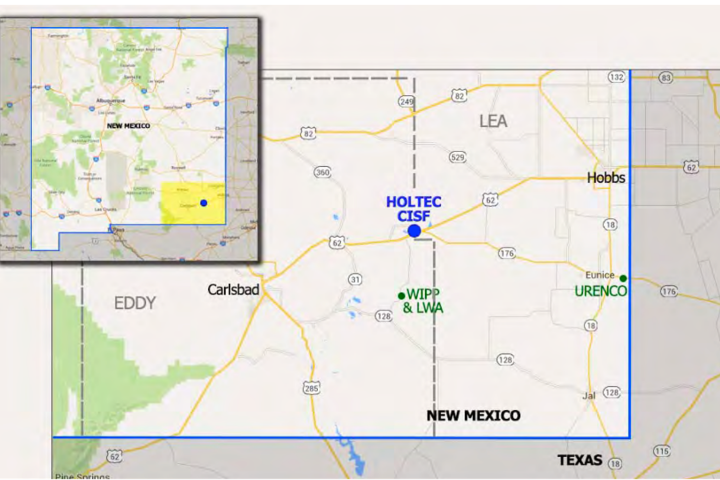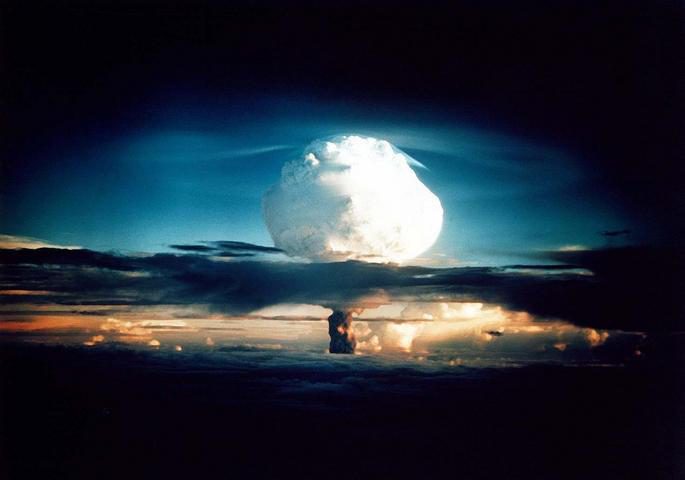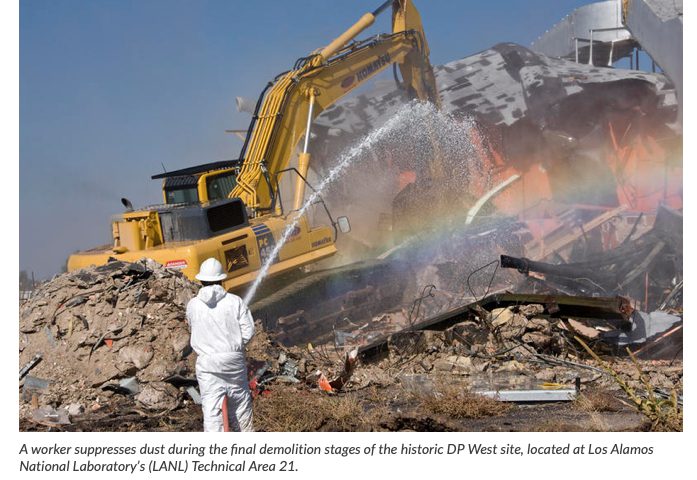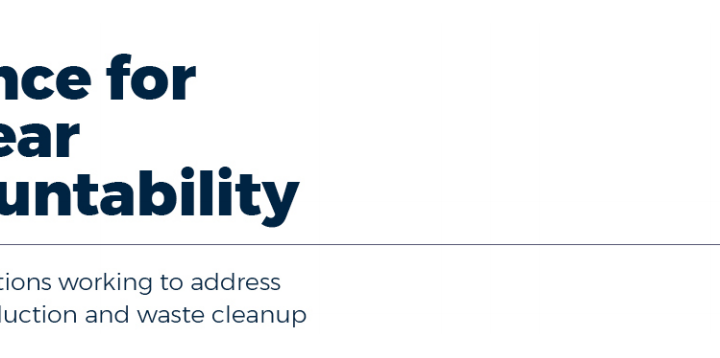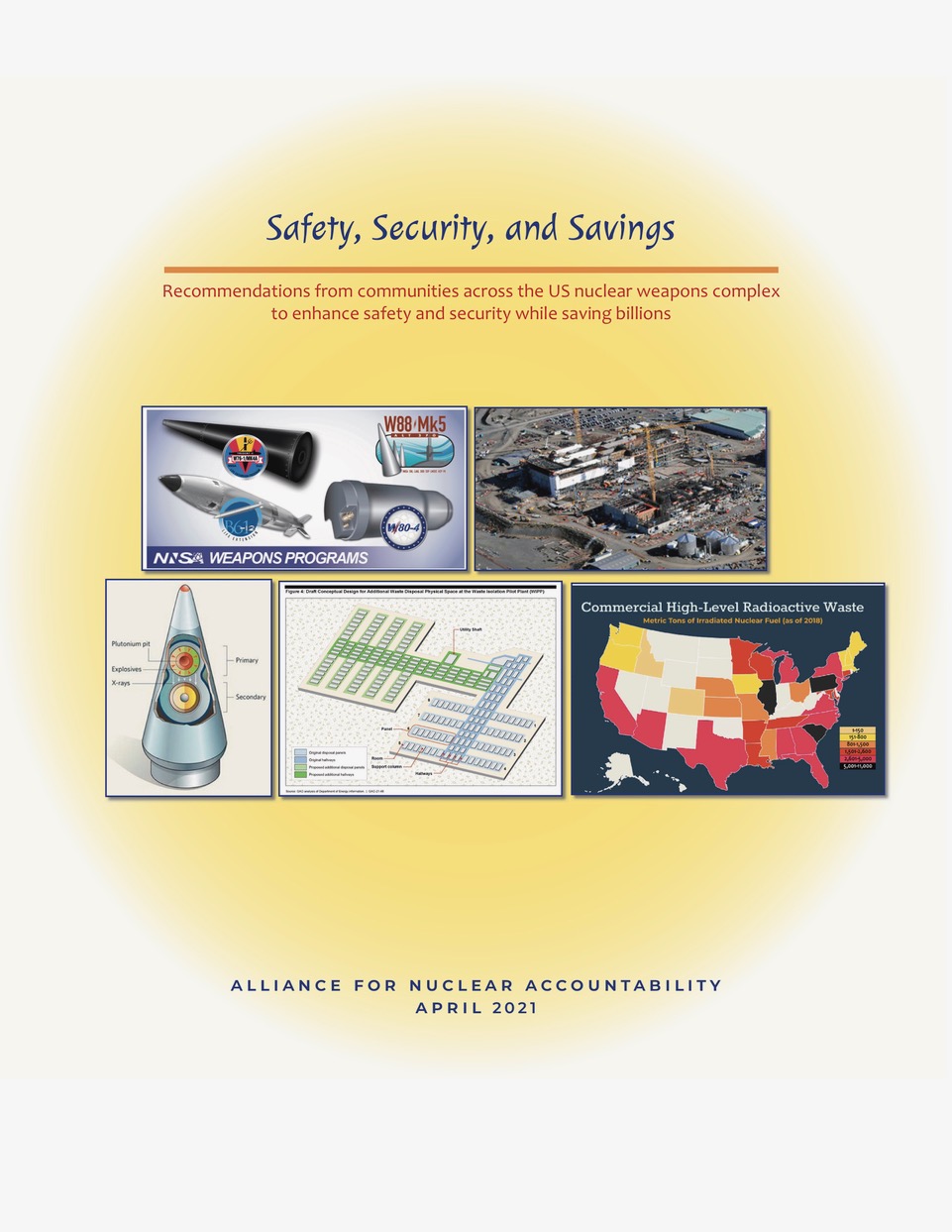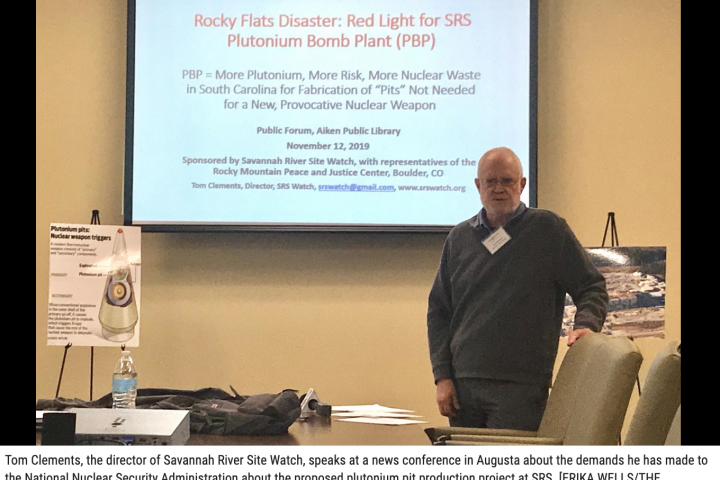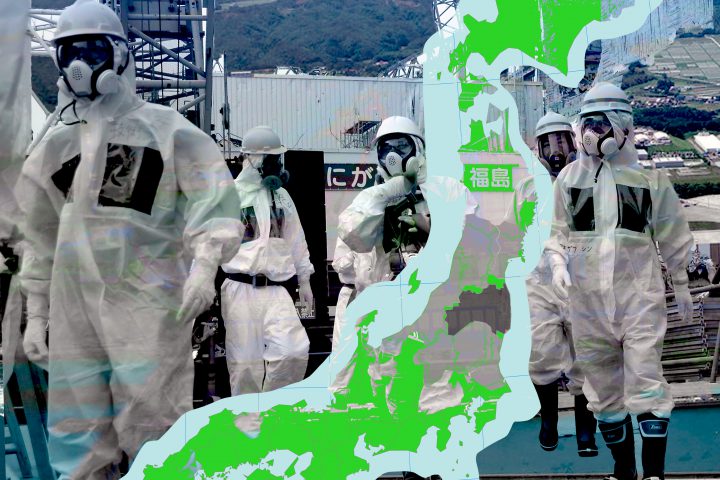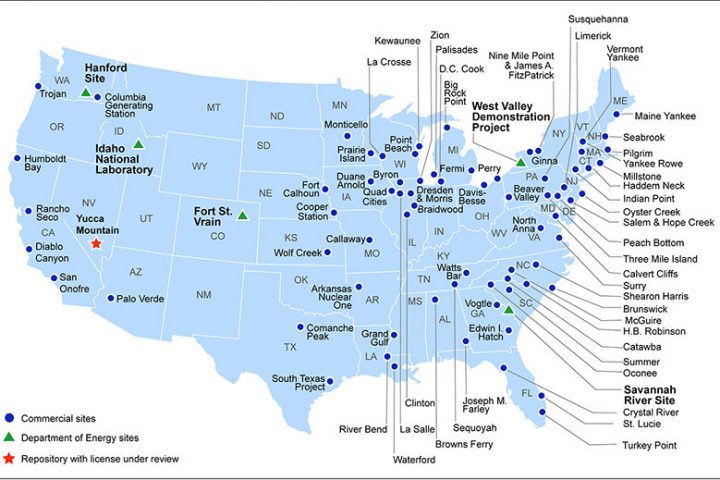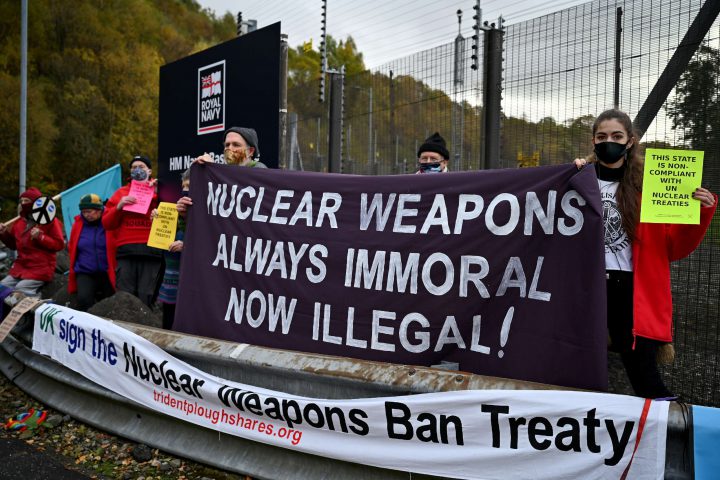The original mission of the Waste Isolation Pilot Plant (WIPP) in southeastern New Mexico had two specific stipulations: it was to be the FIRST and only operating underground nuclear waste repository in U.S; and it is ONLY authorized to take a certain kind of nuclear weapons waste – legacy transuranic (TRU) waste. In December of last year, the U.S. Department of Energy published a notice of intent to expand WIPP. The notice details expansion of the plant in two ways: capacities and types of waste permissible, as well as extended storage/operation timelines. The federal government’s plans would expand the size of the nuclear weapons dump to more than twice its current size and more than is allowed: Federal law and legal agreements with New Mexico clearly limit the amount of waste at WIPP, but the expansion would allow more than that capacity (as described in the April 2020 National Academy of Sciences Report “Review of the Department of Energy’s Plans for Disposal of Surplus Plutonium in the Waste Isolation Pilot Plant.”) This means an increased volume of waste, as well as an increased number of shipments travelling to WIPP over the entire rest of the century.
Author: Sophia Meryn
76 Years After the First Nuclear Bomb Test, the U.S. is Still Dead Set on Building New Weapons of Mass Destruction
Last week, July 16 2021, marked the 76th anniversary of the world’s first nuclear bomb explosion. Within another month, memorials and commemorations will be held for the Japanese cities of Hiroshima and Nagasaki, which the U.S. bombed on 6 and 9 August 1945, respectively. Although it was unknown to most residents of New Mexico until after the United States’ atomic bombing of Japan, the citizens and communities in the southern region of the state were in fact the first nuclear victims.
When the U.S. Army detonated an atomic bomb on July 16, 1945 at 5:29 a.m., “its thunderous roar during the rainy season knocked people from breakfast tables in Tularosa and sent others on the Mescalero Apache reservation into hiding.” (axios.com) Hispanics and Mescalero Apache tribal members in New Mexico are working to pressure lawmakers to compensate those who have suffered extremely because of the experiment. Rare forms of cancer and other health problems have been discovered in those living near the site of the Trinity Test, and the vast, noxious consequences of this experiment have had lasting impact on now multiple, entire generations.
South Carolina Environmental Law Project and Nuclear Watchdogs Virtual Press Conference
Nuclear Watch New Mexico, along with other watchdog groups, has announced a lawsuit against the Biden administration over its expanded production of plutonium cores for the U.S. nuclear weapons “modernization” plans. There has been inadequate environmental review by federal agencies, who have failed to detail potential impacts of the projects around communities in New Mexico and South Carolina.
The lawsuit was filed against the Energy Department and the National Nuclear Security Administration demanding the federal agency that oversees U.S. nuclear research and bombmaking must “take a legally required ‘hard look’ at impacts on local communities and possible alternatives before expanding manufacturing of the plutonium cores used to trigger nuclear weapons.”
The push from U.S. officials to “modernize” the country’s nuclear arsenal cites only general global security concerns that do not justify the science and brand new, untested technology that will be necessary to the task. citing global security concerns. Although “most of the plutonium cores currently in the stockpile date back to the 1970s and 1980s,” scientific experts estimate that plutonium pits will last 100 years or more., and on warhead type, the best estimate of minimum pit life is 85–100 years.minimum.
Los Alamos National Laboratory in northern New Mexico and the Savannah River Site near Aiken, South Carolina face enormous (and, frankly, unrealistic) deadlines to produce a massive number of plutonium cores in coming years – 50 or more cores at South Carolina and 30 or more at Los Alamos National Lab. The Savannah River Site location now has estimated costs up to $11.1 billion, with a completion date ranging from 2032 to 2035. The U.S. doesn’t need the new plutonium cores with the taxpayer bearing the burden for the expense of lagging deadlines and bloated budgets.
“The watchdog groups said Tuesday that the agency took a piecemeal approach to decide on locating the production at Los Alamos and the Savannah River Site, where nearby communities are already underrepresented and underserved.”
Tom Clements of Savannah River Site Watch said the South Carolina location was picked for political reasons following the failure of a facility designed to convert weapons-grade plutonium into commercial nuclear fuel. As the Savannah River Site has never served as a storage or production site for the pits in its history, establishing pit construction there would be “a daunting technical challenge that has not been properly reviewed,” Clements said.
With very real, current threats the U.S. is facing right now, we don’t need another Rocky Flats situation in New Mexico or South Carolina where a $7 billion, yearslong cleanup is required after the facilities fail due to leaks, fires and environmental violations, doing irreparable damage to the earth and placing communities there in unequivocal peril.
Cleanup Funding Request at Los Alamos Would Be Needed Increase
DOE Environmental Management released the Fiscal Year 2022 (FY22) Congressional Budget Request and asked for a $107.5 million increase over last year for legacy cleanup at Los Alamos National Laboratory (LANL). The FY22 EM funding request for cleanup at LANL totaled $333.5 million, which was a record request for cleanup at the Lab.
The Budget Request gives lifecycle costs. LANL has spent $3.8 billion on cleanup from 1997 to 2020. The high estimate is $4.6 billion for FY21 to FY90. This gives a total lifecycle cost of $8.4 billion from 1997 through 2090. The assumption included with these estimates is that most of the waste will remain buried at LANL. This is the first time DOE has mentioned legacy cleanup lasting until 2090. Last year the completion date was given as 2036.
Is legacy cleanup completion being pushed back to prioritize pit production? If DOE starts spending more on cleanup like this year in the future, shouldn’t cleanup take less time? The numbers work out to DOE only spending an average of $50 million between now and 2090, so DOE must not have plans to spend $330 million annually through 2090.
Modernization: The Mainspring of NNSA FY 2022 Budget Request in the Form of Ballooning SRS Pit Costs
The National Nuclear Security Administration’s detailed fiscal year 2022 budget request was (partially) unveiled last week on Friday, May 28, in the evening before a long holiday weekend. The Biden Administration’s total NNSA FY22 budget request is just under $20 billion, requesting of $15.48 billion for NNSA “Total Weapons Activities” and following suit with Trump’s excessive nuclear weapons budget of $15.35 billion that Congress appropriated for FY 2021.
Of particular note in the budget request is that it will cost more than double what the National Nuclear Security Administration had previously estimated for the total of DOE’s Plutonium Bomb Plant construction at Savannah River Site in South Carolina. The facility would be a converted production plant for the fabrication of plutonium “pits,” the triggers for nuclear warheads. The cost for the plant has ballooned from the previous estimate of $4.6 billion to a now staggering $11.1 billion. What’s more, the schedule for the facility’s initial operation has slipped up to five years. The plans for the SRS Plutonium Bomb Plant have already run far over budget and fallen behind schedule, and “these troubling and potentially debilitating developments foreshadow problems to come to the challenging pit-production project,” according to the public interest group Savannah River Site Watch.
MEDIA ADVISORY: WHAT TO LOOK FOR IN THE U.S. DEPARTMENT OF ENERGY’S FY 2022 NUCLEAR WEAPONS AND CLEANUP BUDGET REQUEST
For use with DOE’s scheduled budget release on Friday May 28, 2021
For more information, key contacts are listed below.
The White House is releasing its detailed Fiscal Year 2022 budget on Friday, May 28. A so-called “skinny budget” was released on April 9 that increased Department of Energy (DOE) funding to $46.1 billion, which reportedly includes major new investments in clean energy and climate change abatement. That said, historically roughly 60% of DOE’s funding has been earmarked for nuclear weapons production and cleanup of Cold War wastes and contamination. The pending budget release will finally provide details on those programs.
Because the budget release is so late Congress has already announced that it can’t consider the annual Defense Authorization Act until September. Related appropriations bills will no doubt be delayed too. This means that the government will probably have to run on a Continuing Resolution(s) for much of FY 2022 (which begins October 1, 2021).
The Alliance for Nuclear Accountability strongly opposed the massive 25% FY 2021 increase that the Trump Administration gave to the National Nuclear Security Administration’s (NNSA’s) nuclear weapons programs and proposed cuts to Department of Energy cleanup. In addition, DOE’s nuclear weapons and environmental management programs have been on the Government Accountability Office’s “High Risk List” for project mismanagement and waste of taxpayers’ dollars for 28 consecutive years. Related, the Congressional Budget Office (CBO) has just released a report that projects a 28% increase in costs for so-called “modernization” of U.S. nuclear forces that between the Defense Department and DOE is expected to cost around $1.7 trillion over 30 years.
The Alliance for Nuclear Accountability, a 34-year-old network of groups from communities downwind and downstream of U.S. nuclear weapons sites, will be analyzing the following critical issues. For details, contact the ANA leaders listed at the end of this Advisory.
Virtual Advocacy for “Safety, Security, and Savings” at ANA DC Days:
May 26, 2021
Nuclear Watch New Mexico virtually visited Washington, DC this month to participate in the Alliance for Nuclear Accountability’s “DC Days,” an annual event where organizations from across the nation, whose members are directly affected by nuclear weapons production and the incidental health and environmental consequences, make their voice heard to federal policy makers.
Nuclear Watch NM was focused on opposing new plutonium pit production at Savannah River Site and Los Alamos, pushing for safe and secure toxic cleanup and prioritizing public health while saving billions by terminating ill-conceived new nuclear weapons programs. View more information on these issues in the Alliance for Nuclear Accountability’s new report, “Safety, Security, and Savings,” which describes in detail the foundation of our 2021 advocacy. The report includes a series of fact sheets and recommendations covering new warheads, bomb plants, nuclear waste, cleanup, and more.
Notice of Impending Lawsuit to DOE & NNSA Over Nuclear Bomb Core Plans from Environmental Groups
Nuclear Watch New Mexico, as part of a larger coalition of environmental groups, has threatened the federal government with a lawsuit over cross-country plans to produce plutonium pits, the cores at the heart of modern nuclear weapons.
A more comprehensive review should have been done on the plans to produce plutonium cores at Los Alamos and at the Savannah River Site in South Carolina. This lack of review violates the National Environmental Policy Act (NEPA) and would saddle already-burdened communities nearby the two DOE sites with significant quantities of toxic and radioactive waste, contravening President Biden’s executive order of making environmental justice a part of the mission of every agency. Here in New Mexico, we are well aware of how much our local community has already have been burdened with legacy contamination from previous defense work. While the budget continues to be cut and slashed for cleanup funding, the astronomical cost of modernizing the U.S. nuclear weapons arsenal continues to balloon out of proportion without NNSA or DOE batting an eyelash. The federal government’s plans are unnecessary and provocative – more plutonium pit production will result in more waste and help to fuel a new arms race.
10 Years Since Fukushima Nuclear Disaster
11 March 2021 marks the 10th anniversary of the triple catastrophe which marked the life of many residents of Eastern Japan: a powerful earthquake, deadly tsunami and nuclear meltdown that left almost 18,500 people killed or missing. Much has been achieved in disaster-hit areas but they are still seriously recovering, and the staggering loss of life and community is still being felt by the nation today. The impacts on communities from the ongoing dispersal of radioactive contamination released from the explosions at the Daiichi nuclear power plant in Fukushima have been disastrous. Tokyo will probably face a massive earthquake in the next 30 years, and Japan must prepare for this next big quake while the Fukushima nuclear meltdown on Japan’s north-eastern coast remains firmly in the minds of everyone there.
Since the disaster, tens of thousands of people have been displaced from their ancestral lands. The harm extends far beyond the immediate threat to health – as well as destroying livelihoods, it has destroyed an entire way of life.
Leave Nuclear to the Sun: Solar Energy & Renewables are the Source of the Future
The nuclear energy industry has had a fraught year. Well…I mean, haven’t we all…But still, it’s pleasantly surprising to see such a looming giant begin to wither and fall. The nuclear power industry is failing, as evidenced not only by the alarming reports of fraud, corruption, and other fiascos that occurred at multiple nuclear facilities over the course of 2020, but also by the numbers that prove renewables are simply better for ALL of our futures – not just the nuclear business moguls our taxpayer dollars so generously continue to bail out.
Solar to be No. 1 in US for new 2021 electricity generating capacity
Nuclear Weapons Have Always Been Immoral. Now They’re Illegal.
On 7 July 2017, the Treaty on the Prohibition of Nuclear Weapons (TPNW) was adopted by the UN General Assembly. Just over three years later, the TPNW reached the 50 national ratifications needed to become international law. The treaty will enter into force on January 22, 2012, and nuclear weapons will become officially illegal under international law. This day will represent a culmination of years of campaigning for nuclear weapons to be reframed as a collective humanitarian problem, one which requires prohibition and elimination, rather than a national military defense asset that needs to be managed and even upgraded.
Second Public Meeting for Controversial Tritium Releases at the Los Alamos Lab
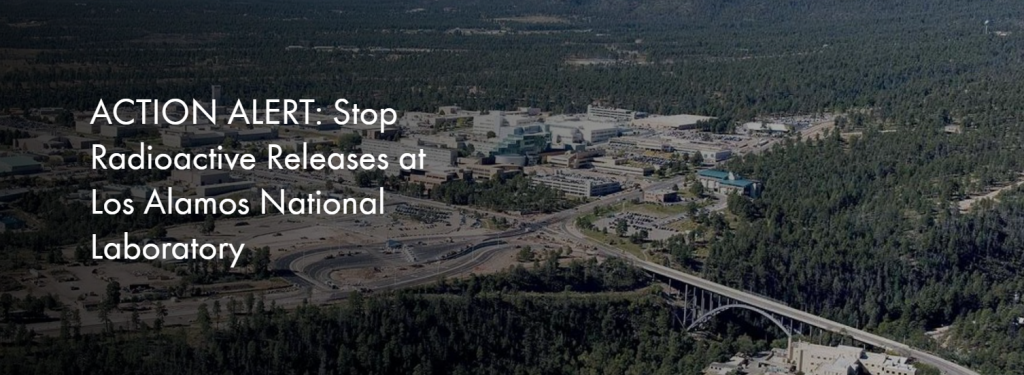
Because of overwhelming public demand and technical problems with the first virtual public meeting, the National Nuclear Security Administration is holding a second meeting on the Los Alamos National Laboratory’s (LANL’s) controversial plan to vent up to 100,000 curies of tritium gas. Tritium is a radioactive isotope of hydrogen, used to boost the explosive power of nuclear weapons. Most vented tritium will condense into water vapor which can then be readily ingested by living organisms, including humans. Fetuses are particularly at risk.
LANL’s nuclear weapons budget has doubled over the last decade to $2.9 billion in fiscal year 2021. But funding for so-called cleanup has remained flat at around $220 million, or 8% that of nuclear weapons. In fact, LANL plans to “cap and cover” some 200,000 cubic yards of radioactive and toxic wastes, leaving them permanently buried in unlined pits above our groundwater, some three miles uphill from the Rio Grande, and call it cleaned up. To add to this, the Lab now plans to dose the public by venting excess tritium.
DOE Repeatedly Asks Safety Board for Time Extensions, Los Alamos Lab Asked for >150 Cleanup Milestone Extensions, But During Pandemic NNSA Rejects NM Senators’ Request for Extension of Public Comment on Plutonium Bomb Core Production
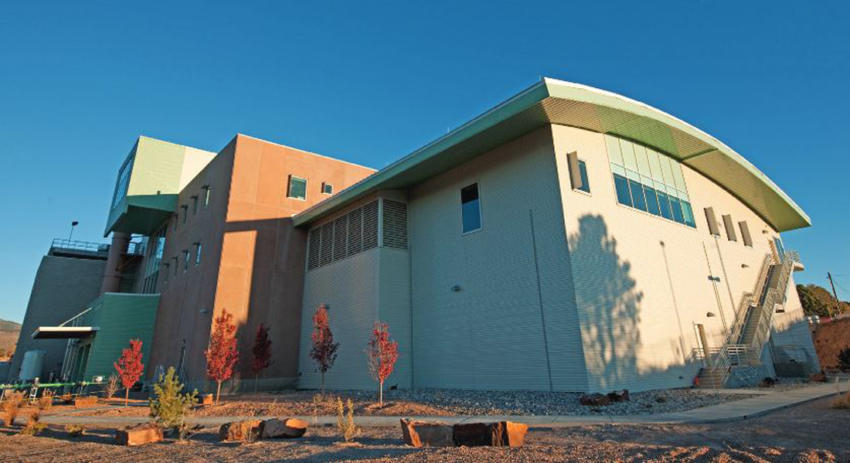
Lisa Gordon-Hagerty, head of the National Nuclear Security Administration (NNSA), has rejected a request by New Mexico Senators Tom Udall and Martin Heinrich to extend the public comment period on expanded plutonium “pit” bomb core production because of the COVID-19 pandemic. In contrast, even in normal times NNSA and its parent Department of Energy routinely ask other government agencies for major time extensions when it comes to cleanup and independent oversight.
The two Senators requested a 45 day comment period extension on behalf of more than 120 organizations and individuals. Before that, Tom Udall and Martin Heinrich were among 24 Senators who asked the Office of Management and Budget to extend all federal public comment periods during the coronavirus national emergency.
Letter With >120 Group & Individual Sign-Ons Asks Udall and Heinrich to Extend Public Comment Period on Los Alamos Lab Plutonium Bomb Core Production
Today, on behalf of more than 120 groups and individuals, Nuclear Watch New Mexico sent a letter to New Mexico Senators Tom Udall and Martin Heinrich. It asks them to act upon their own words and demand that the public comment period be extended for plutonium “pit” bomb core production that the National Nuclear Security Administration (NNSA) is fast tracking during the coronavirus epidemic. As sitting members of the Senate Appropriations and Armed Services Committees, Udall and Heinrich are in strong positions to make that demand of NNSA.
DOE Ignores COVID-19 Threat, Diverts Resources to Planning for Nuclear War by Releasing Draft Environmental Study on SRS Plutonium Bomb Plant
 Today, in the middle of the growing coronavirus pandemic, the U.S. Department of Energy ignored the real national crisis and irresponsibly shifted its focus to planning for nuclear war, revealing plans to construct a Plutonium Bomb Plant (PBP) at the Savannah River Site (SRS) in South Carolina.
Today, in the middle of the growing coronavirus pandemic, the U.S. Department of Energy ignored the real national crisis and irresponsibly shifted its focus to planning for nuclear war, revealing plans to construct a Plutonium Bomb Plant (PBP) at the Savannah River Site (SRS) in South Carolina.
DOE’s semi-autonomous National Nuclear Security Administration (NNSA) today formally released the Draft Environmental Impact Statement for Plutonium Pit Production at the Savannah River Site in South Carolina, whose proposed action is to establish the production of plutonium “pits” (nuclear warhead cores) at SRS at a rate of up to 125 pits per year, with at least 50 pits per year by 2030 as the stated objective for now.
LANL Plans to Release Up To ~100,000 Curies of Radioactive Gas
Santa Fe, NM – On March 11, the Los Alamos National Laboratory (LANL) sent the federal Environmental Protection Agency a formal notice that the Lab will intentionally release up to some 100,000 curies of tritium, a radioactive isotope of hydrogen gas, beginning April 17, 2020.
An internal Lab document states that actual “anticipated emissions” could be half that because of tritium remaining behind in equipment but offers no documentation to substantiate it. During the 1980’s LANL arbitrarily used a self-declared “building shielding factor” not approved by the EPA that reduced its legally required annual calculated radioactive air dose to the public by a third. When that reduction was disallowed LANL was in fact in legal violation of the Clean Air Act. With that as an example, undocumented reductions in radioactive doses claimed by LANL should be viewed with suspicion.
Energy Dept. Nearly Triples Funding for Plutonium Pit Production, Cuts Cleanup in Half – But Refuses to Complete New Env. Impact Statement for Los Alamos Lab
Santa Fe, NM – Today the Department of Energy’s semi-autonomous nuclear weapons agency, the National Nuclear Security Administration (NNSA), announced that it will not complete a new site-wide environmental impact statement for the Los Alamos National Laboratory (LANL). The last site-wide environmental impact statement was in 2008.
Since that time a catastrophic wildfire burned to the western boundary of the Lab (likely to occur more frequently with climate change); an exploding radioactive waste drum improperly prepared by LANL shut down the Waste Isolation Pilot Plant for three years, costing taxpayers ~$3 billion to reopen; the full extent and depth of a hexavalent chromium plume contaminating the regional groundwater is still not fully determined; and LANL’s long track record of chronic nuclear safety incidences remain unresolved.
LANL Budget Increased by Nearly $1 Billion to Accelerate Work As Production Site for Nuclear Weapons Designs by Livermore Lab Cleanup Cut by 46%
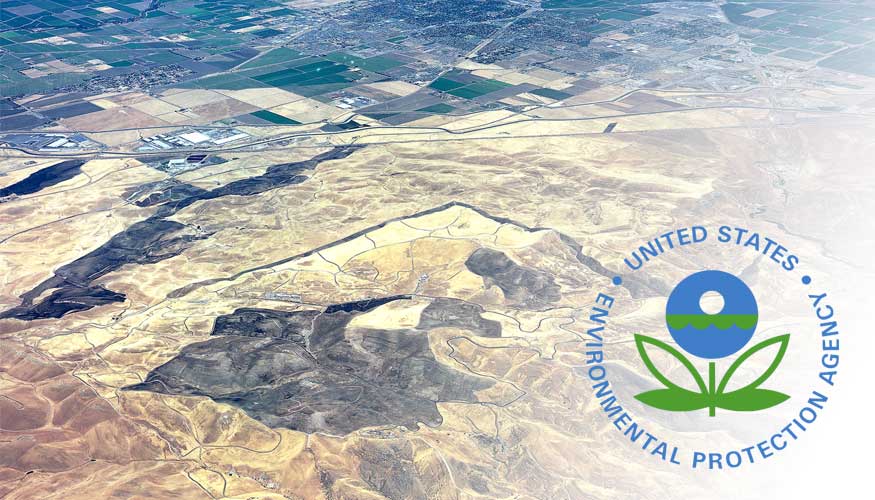
Santa Fe, NM – The Trump Administration has released more budget details for its proposed Fiscal Year 2021 federal budget for the Department of Energy and its semi-autonomous nuclear weapons agency, the National Nuclear Security Administration (NNSA). The Los Alamos National Laboratory (LANL) is slated to receive nearly a one billion dollar increase for its nuclear weapons programs (up 48%), overwhelmingly for new production. At the same time cleanup, whose need is caused by nuclear weapons production, is cut by 46%.
Significantly, LANL’s FY 2021 budget for design work of nuclear weapons stayed flat after falling by 28% from FY 2018 to FY 2019. Meanwhile, funding for nuclear weapons design work at the Lawrence Livermore National Laboratory more than doubled from FY 2019 to FY 2021.
As the NonProliferation Treaty’s 50th Anniversary Approaches U.S. to Soon Fund New Nuclear Warhead at $1 Billion Per Year
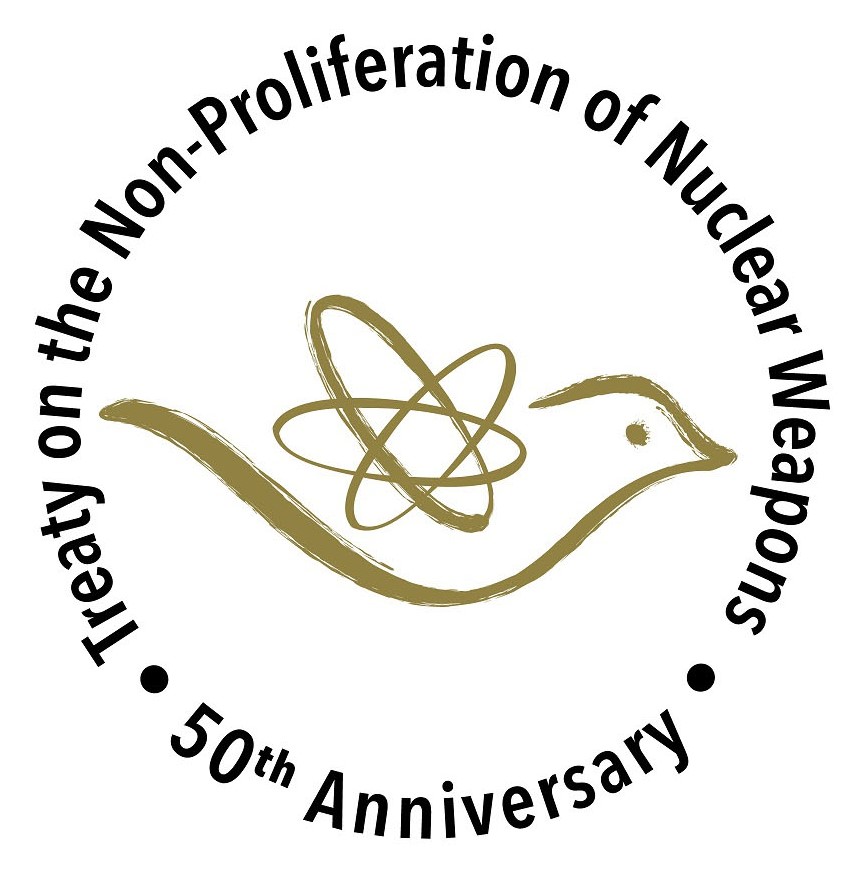
Santa Fe, NM – This March 5, 2020, marks the 50th anniversary of the NonProliferation Treaty, whose central bargain was that non-nuclear weapons states forswore acquiring them in exchange for which nuclear weapons states promised to enter into serious negotiations leading to their elimination. Those negotiations have never happened.
The Trump Administration has marked the occasion by finally releasing the detailed fiscal year 2021 Congressional Budget Request for the Department of Energy’s semi- autonomous nuclear weapons agency, the National Nuclear Security Administration (NNSA). The NNSA’s program for new and upgraded nuclear weapons gets a 3 billion dollar-plus mark up to $15.6 billion, slated to jump to $17 billion annually by 2025. This includes a new nuclear warhead, the submarine launched W93, initially funded at $53 million in FY 2021, but slated to climb to $1.1 billion annually by 2025. New warhead design and production typically take around 15 years or more.
Trump’s FY 2021 DOE Nuclear Weapons Budget Sets Post-Cold War High – New Nuclear Warhead Is Planned
Today the Trump Administration released topline budget numbers for fiscal year 2021 for the Department of Energy (DOE). This includes DOE’s semi-autonomous National Nuclear Security Administration (NNSA), whose nuclear weapons programs are slated to receive the highest amount of taxpayer dollars since the Cold War ended nearly 30 years ago.
This year 2020 marks the 75th anniversaries of the atomic bombings of Hiroshima and Nagasaki and the 50th anniversary of the Non-proliferation Treaty (NPT), which is commonly regarded as the cornerstone of international nuclear weapons nonproliferation. The NPT required the established nuclear powers to enter into serious negotiations leading to global nuclear disarmament, which they ignored. 2020 also marks the third anniversary of a nuclear weapons ban treaty that needs only 16 more nations to ratify before it goes into effect. The U.S. and other nuclear weapons powers vigorously oppose that ban treaty even as their “modernization” programs are fueling a new nuclear arms race and international arms control is collapsing.
Watchdog Groups Claim Nuclear Agency is Moving Forward to Manufacture New Plutonium Bomb Cores in Violation of National Environmental Law and an Existing Court Order
![]()

New Momentum for Saner Nuclear Policy: Event Highlights

BY SOPHIA STROUD | – NukeWatch NM Web Designer
Monday 3/18 Ploughshares Fund hosted an in-depth discussion about the momentum building for a new, saner nuclear policy and how California can lead the way to a safer, more secure world.
“The more that I dug into the history of nuclear weapons and the legacy that system has today, the more I realized that all the issues I cared about, from gender-based violence, to environmental justice, to climate change, to human rights, to money in politics, is so influenced by the nuclear system. I realized that taking up this mantle now…not only would I be working on issues I’m passionate about and clearing those hurdles that the nuclear system have put up across the board for socialized institutions we care about, but also working on preventing nuclear Armageddon.”
– Yasmeen Silva, Lead organizer for Beyond the Bomb’s #NoFirstUse and other campaigns

3/13 PODCAST: Nuke Watch Director Jay Coghlan on the Lawsuit Against LANL
LISTEN ON SANTAFE.COM
Fukushima: Eighth Anniversary of a Crippling Nuclear Disaster
BY SOPHIA STROUD | – NukeWatch NM Web Designer
On Friday, March 11, 2011, a 9.0 M earthquake occurred off the East coast of Japan, triggering a massive tsunami in the region of Tohoku. In the Miyagi and Fukushima prefectures of this region, the wave was over 10 meters tall upon landfall. During the 1970s and 80s, coastal residents of Japan welcomed nuclear power, and two plants were built to supply electricity to Tokyo. When the tsunami hit in 2011, many districts of Fukushima lost power, which caused the cooling system in TEPCO’s Fukushima Daiichi nuclear power plant to fail.
This power failure led to a series of nuclear meltdowns and hydrogen-air chemical reactions within the plant, which caused a release of highly radioactive material into the surrounding environment. The radioactive plume released from the Fukushima nuclear power plant was large enough to carry radioactive material for miles in every direction, and nearby residents were immediately evacuated. The Fukushima Daiichi nuclear power plant meltdown and ensuing leakage of radioactive materials was a disaster on the scale of Three Mile Island and Chernobyl.

